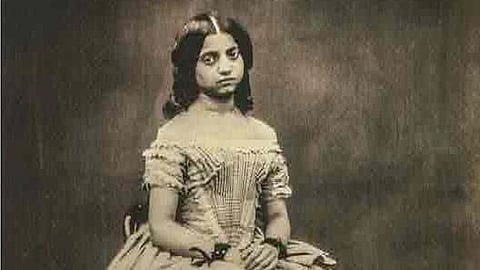
- Home
- न्यूजग्राम
- NewsGram USA
- India
- World
- Politics
- Entertainment
- Culture
- Lifestyle
- Economy
- Sports
- Sp. Coverage
- Misc.
- NewsGram Exclusive
- Jobs / Internships

Key Points:
Princess Gouramma, daughter of Coorg’s exiled ruler Chikka Virarajendra, visited Britain in 1852
Queen Victoria adopted and baptized Gouramma, renaming her “Princess Victoria Gouramma” and erasing her cultural identity.
Gouramma later married Lt. Col. John Campbell but died of tuberculosis at the age of 23.
In the mid-19th century, a young Indian princess crossed the seas to Victorian England. She arrived not as a royal guest, but as a pawn in the empire’s web of power. Her name was Gouramma — later renamed Princess Victoria Gouramma. The princess of Coorg left her homeland with hopes of securing a better future, never realizing that her journey would cost her her identity, her faith, and ultimately, her freedom. Her story is a haunting reminder of how the British Empire could strip away not just land and wealth — but identity itself.
Born in 1841 in Benaras, Gouramma was the only daughter of Chikka Virarajendra, the last ruler of Coorg (Kodagu), a small kingdom in southwest India. Her father had been deposed and exiled by the British East India Company in 1834, following the Coorg War.
Far from his homeland, the once-proud king dreamed of reclaiming his throne and ensuring a secure future for his beloved daughter.
In 1852, the exiled Raja and his 11-year-old daughter set sail for England — becoming the first known Indian royals to ever visit Britain. The Raja’s mission was clear: to petition Queen Victoria for the return of his confiscated property and royal pension. But their arrival in London would change Gouramma’s life forever.
When the exiled Raja and his daughter reached London, they instantly fascinated Victorian high society. The British press described the young princess as a “pigeon among crows” — exotic, charming, and a living emblem of the empire’s global reach. Queen Victoria herself was immediately captivated by Gouramma and took her under her protection.
Some accounts suggest that the Raja willingly placed his daughter under the Queen’s guardianship, hoping for her safety and education. Others claim she was effectively taken as a political hostage — a pawn in Britain’s moral and imperial ambitions.
The Queen’s fondness, however, soon turned into control. She decided that the young girl should be baptized into Christianity. In a grand and highly publicized ceremony, Gouramma was baptized by the Archbishop of Canterbury and renamed “Victoria,” after the Queen herself. From that day forward, she was no longer Gouramma of Coorg — she became Princess Victoria Gouramma, the Christian ward of the British monarch.
Queen Victoria ensured that Gouramma was educated in Western ideologies and customs. The young princess was placed with an English family, where she was taught British etiquette and trained to speak, dress, and conduct herself like a noblewoman of Victorian society. Frequently appearing at royal events and often seen in the Queen’s company, Gouramma was regarded as an honorary princess within the royal household.
But beneath the glamour, Gouramma was a child torn between worlds. She longed for her homeland, her language, and her father — who, despite living in London, was forbidden from meeting her on the Queen’s orders. Several times, she tried to run away, desperate to escape the gilded cage she had been placed in.
As Gouramma grew older, Queen Victoria began searching for a suitable husband — ideally someone who could further her missionary ambitions in India. The Queen’s preferred match was Maharaja Duleep Singh, the last ruler of the Sikh Empire, who had also been converted to Christianity and brought to Britain. The Queen imagined their marriage as a symbolic union of East and West.
But no romance blossomed between the two. Instead, Gouramma fell in love with Lt. Col. John Campbell, an army officer thirty years her senior. Defying expectations, she married him in 1860, hoping the union would grant her independence.
Tragically, the marriage turned out to be unhappy. Campbell, known for his gambling, quickly squandered Gouramma’s wealth. In 1861, she gave birth to a daughter, Edith Campbell, but Gouramma's health and marriage both deteriorated rapidly.
In 1864, at just 23 years old, Princess Victoria Gowramma died of tuberculosis — far from her homeland, stripped of her roots and the life she once knew. Her daughter, Edith, was only three when Gowramma’s story came to an end. [Rh]
